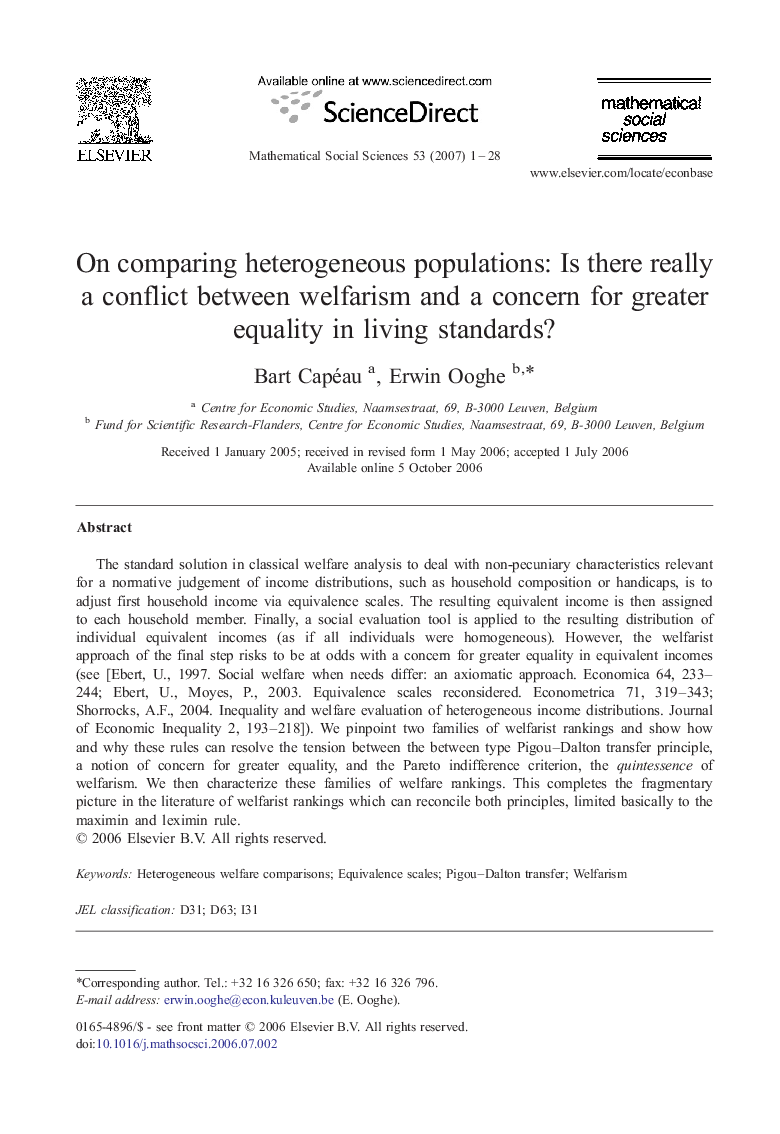| کد مقاله | کد نشریه | سال انتشار | مقاله انگلیسی | نسخه تمام متن |
|---|---|---|---|---|
| 973134 | 932759 | 2007 | 28 صفحه PDF | دانلود رایگان |

The standard solution in classical welfare analysis to deal with non-pecuniary characteristics relevant for a normative judgement of income distributions, such as household composition or handicaps, is to adjust first household income via equivalence scales. The resulting equivalent income is then assigned to each household member. Finally, a social evaluation tool is applied to the resulting distribution of individual equivalent incomes (as if all individuals were homogeneous). However, the welfarist approach of the final step risks to be at odds with a concern for greater equality in equivalent incomes (see [Ebert, U., 1997. Social welfare when needs differ: an axiomatic approach. Economica 64, 233–244; Ebert, U., Moyes, P., 2003. Equivalence scales reconsidered. Econometrica 71, 319–343; Shorrocks, A.F., 2004. Inequality and welfare evaluation of heterogeneous income distributions. Journal of Economic Inequality 2, 193–218]). We pinpoint two families of welfarist rankings and show how and why these rules can resolve the tension between the between type Pigou–Dalton transfer principle, a notion of concern for greater equality, and the Pareto indifference criterion, the quintessence of welfarism. We then characterize these families of welfare rankings. This completes the fragmentary picture in the literature of welfarist rankings which can reconcile both principles, limited basically to the maximin and leximin rule.
Journal: Mathematical Social Sciences - Volume 53, Issue 1, January 2007, Pages 1–28